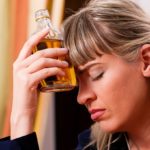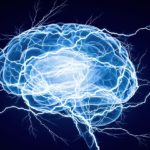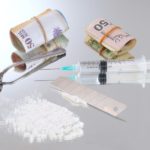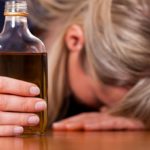Cocaine is arguably one of the most well known “hard” drugs in the world, the mere mention of the word can conjure up images of far-flung Latin-American poverty and scenes of violence from movies like “Scarface”. For once, the scenes found in films such as this are not actually too far from the truth, while the old adage of “for every kilo of cocaine, six people pay with their lives” is probably a grossly inflated figure, the cocaine trade still racks up a very significant body count in both overdose and drug violence terms.
However, most people are blissfully unaware of this as they prepare to go out for a Friday night of drinking on the town. A lot of them will be snorting up lines of a substance whose origins, production and even composition they know nothing about. In fact, it is said that cocaine use is so high in the UK that traces of cocaine can be found in shrimp in some waters around Britain. So in this article, we will examine exactly how cocaine is made and how it comes to the shores of Europe, Australia and the US.
Coca Leaf
Coca leaves are the base ingredient for all cocaine and come from a three meter high bush called a Coca Plant (or Erythroxylum coca) and it has been a traditional medicine and religious sacrament for thousands of years throughout most South American countries where it is found. More recently in the 18th and 19th century, it was chemically refined into a formula known as “cocaine” and was promoted as kind of cure-all and used as a local anesthetic in dentistry. Some forms of cocaine, like “Novocain” are still used in dentistry today.
The leaves are first grown in mountainous regions over South America, in countries like Bolivia and Peru, usually by local farmers working for drug trafficking organizations called “cartels”. The farmers grow the leaves in huge quantities to be transported over to a makeshift lab (normally in a hidden, remote location in the jungle). The location of these labs is a closely kept secret and are usually heavily guarded and fortified against the activities of law enforcement officials. From there, it is processed and washed before continuing its journey to becoming the snortable white powder we know in the west.
Paste and Base
After the leaves are grown (sometimes dried) and transported to the labs, they begin the extraction process. That is the process of removing all of the cocaine from the other materials found in the leaves, there are two methods which can be used to do this:
- Solvent extraction – This is the most common and considered the “traditional” method of making cocaine, in which a powder made from dried and ground coca leaves are mixed with an inorganic base such as lime. Then organic solvents, like kerosene or gasoline, combined to a slurry of different wet and dry ingredients. It is then left to soak for several days with occasional stirring. The chemists in the lab will then carefully heat the mixture to remove any traces of wax found on the leaves and then extract the solvent from the plant matter by means of presses, mixed with dilute sulfuric acid and again left to sit for several days. After mixing with more lime or caustic soda, the acid is neutralized and what’s left is a gummy paste.
- Acid extraction – This process while similar to solvent extraction instead requires workers to mix coca leaves with dilute sulfuric acid which is then stomped on, usually by child workers, for several hours. This not only leaves them with sometimes severe internal and external injuries but renders the cocaine from the leaves where it is pressed and extracted into a paste.
However, the paste left behind is generally not what street users would come across or expect from their dealer, in order to make it into the highly popular white powder, the paste must be turned into a base. This is due to impurities in the paste which would affect the purity and quality of the finished product. In order to do this, the paste is dissolved in a mixture of dilute sulfuric acid and potassium permanganate in order to oxidize the impurities into a compound known as manganese dioxide, which can be easily filtered from the solution. More and more potassium permanganate is added with vigorous stirring and left to settle until all of the impurities form a sediment at the bottom of the container.
After filtering, dilute ammonia is added to neutralize the solution again and filtered leaving behind very pure cocaine hydrochloride.
Smuggling
The exact methods and routes taken by drug traffickers is again a very closely guarded secret, but the product is most usually either hidden inside legal goods and shipped using conventional means to its destination, dropped via airplane to waiting boat couriers below, or transported using mules who either swallow these packages or insert them in other orifices to board a flight to their intended destination. Most usually the drugs are moved to a country with low border security to be shipped onwards to its final destination.
On the Street
Most cocaine that is found on the streets of a country like the UK is a highly diluted form of cocaine hydrochloride, either due to it being cut with another substance like amphetamine to increase the dealers’ profit, or due to it being processed into crack cocaine rocks (a highly addictive and smokeable form of cocaine).
Now that you know the lengths to which producers and suppliers o cocaine will do in order to get this drug to you, including forcing young children to work and murdering anybody who attempts to stand in their way, do you still think a line of coke is just a bit of harmless fun on a Friday night?
If you feel like you need professional help and advice to help combat your cocaine addiction then please get in contact with us on +66 64 492 2208






